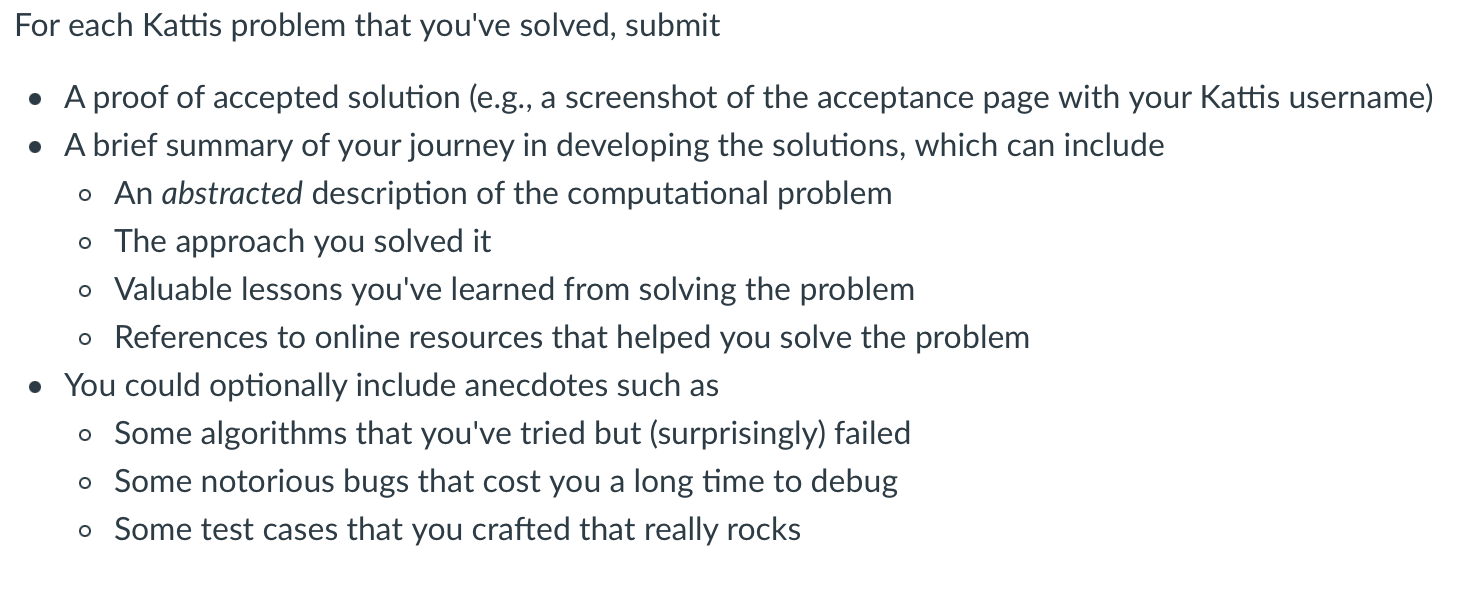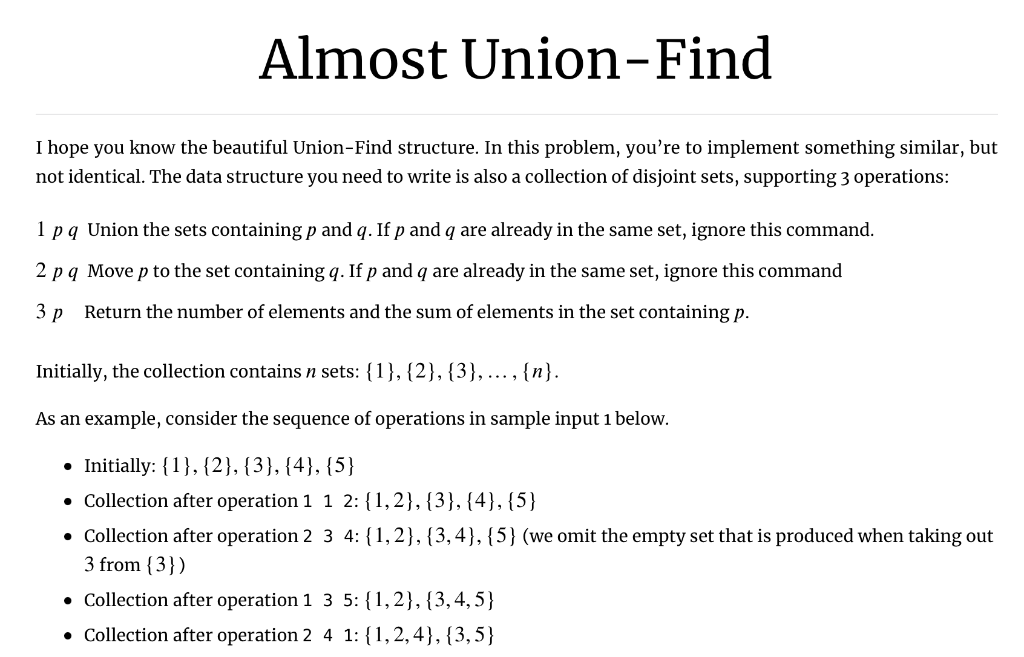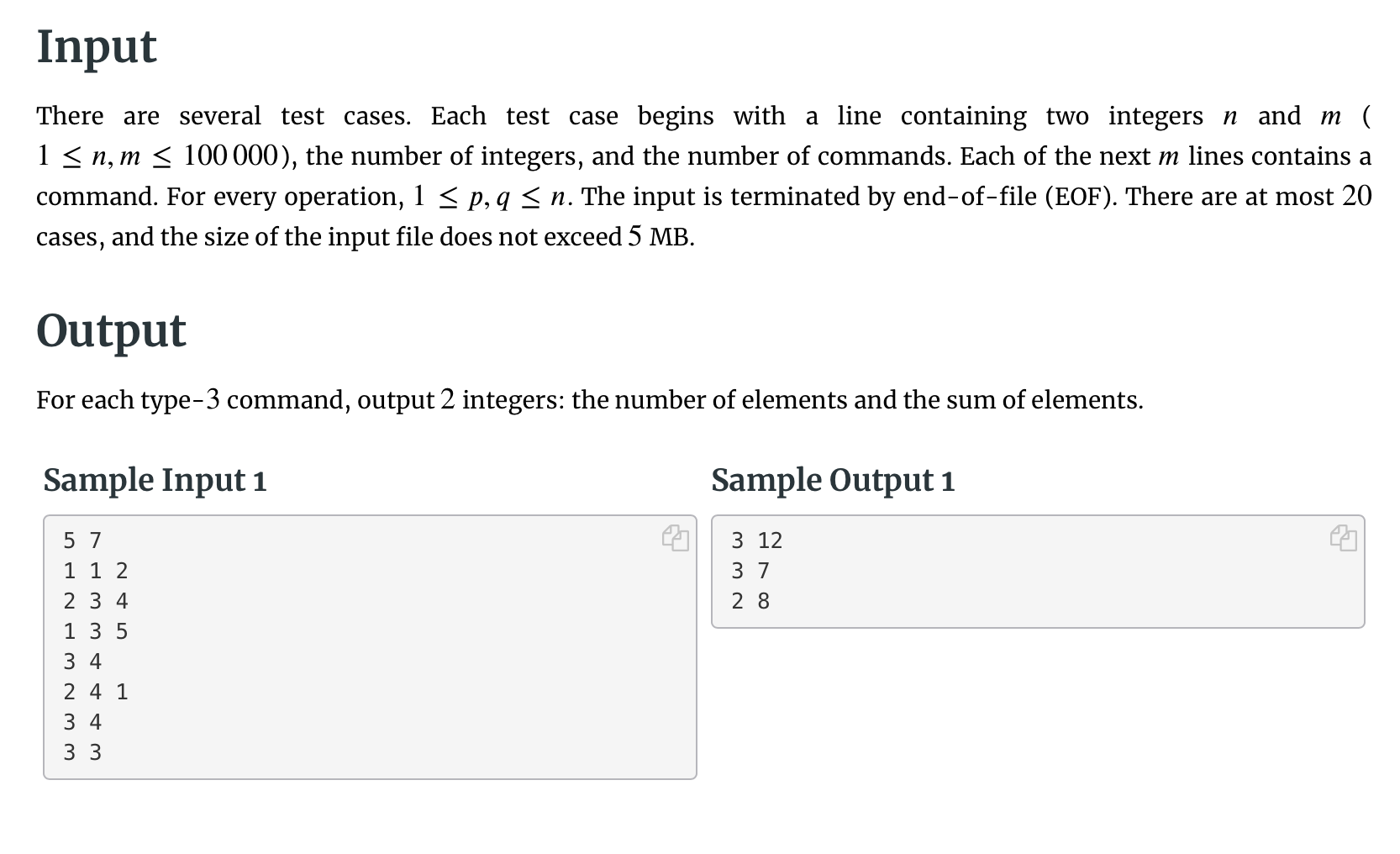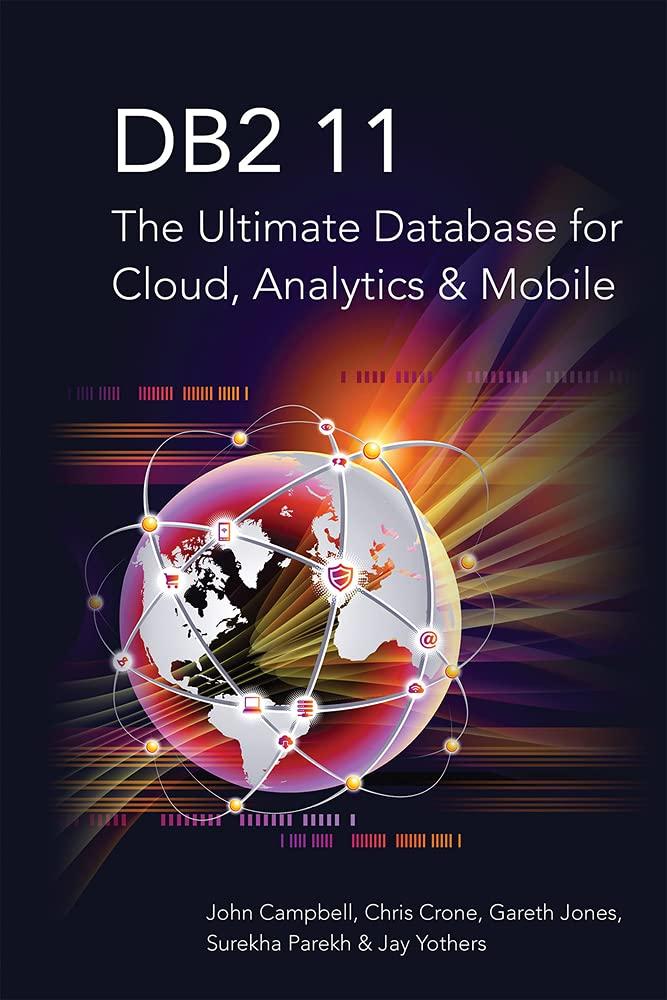Answered step by step
Verified Expert Solution
Question
1 Approved Answer
Solve the given programming question in C/C++. You can try submitting your code on Kattis website and see all test cases pass. Once done also
Solve the given programming question in C/C++. You can try submitting your code on Kattis website and see all test cases pass. Once done also write a summary of your journey in developing the solution as asked below. 



Step by Step Solution
There are 3 Steps involved in it
Step: 1

Get Instant Access to Expert-Tailored Solutions
See step-by-step solutions with expert insights and AI powered tools for academic success
Step: 2

Step: 3

Ace Your Homework with AI
Get the answers you need in no time with our AI-driven, step-by-step assistance
Get Started


